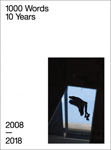 |
|
| Photography in Flux 1000 Words: 10 Years (print edition), 2018 |
|
 |
|
| Should I Do a Photography MA? Source 91, Autumn 2017 |
|
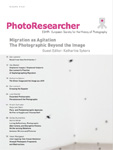 |
|
| Expanded Photography: Persistence of the Photographic PhotoResearcher 26 (2016) |
|
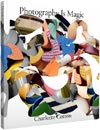 |
|
| Poetic, Magic (Book Review) Source 85, Spring 2016 |
|
 |
|
| Situations and Seductions: Mariana Rothen’s Shadows in Paradise Photoworks Annual 22, 2015 |
|
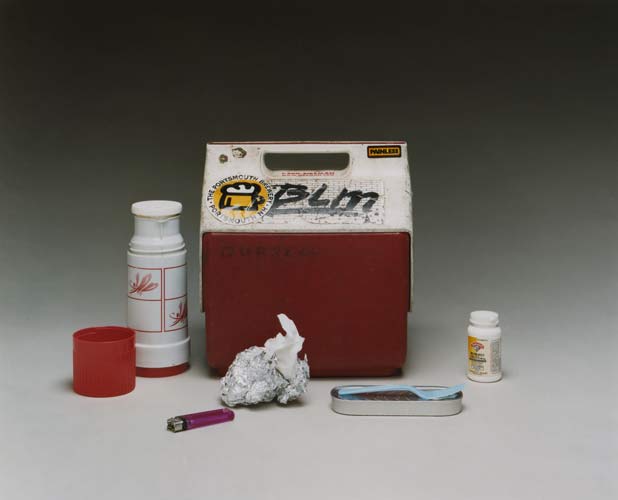 |
|
| Conceptual Photography Source 71, Summer 2012 |
|
 |
|
| Perhaps When Reproduced Language and Site in Lawrence Weiner's Public Freehold Works ARC14, Summer 2010 |
|
 |
|
| Idris Khan: The Collapsed Archive Source 49, Summer 2006 |
|
 |
|
| Karen Knorr: Fables Portfolio 42, December 2005 |
|
 |
|
| Adam Fuss: Medium as Muse Source 45, Winter 2005 |
|
 |
|
| Malerie Marder: The State of Contemnporary Desire Source 44, Autumn 2005 |
|
 |
|
| Hannah Starkey: Art's Best Tricks Source 40, Autumn 2004 |
|
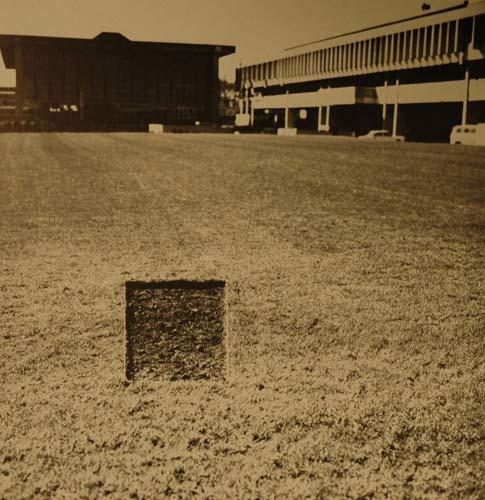 |
|
| The Photographic Idea: Reconsidering Conceptual Photography Afterimage vol. 26 no. 5, March/April 1999 |
Source 91, Autumn 2017
Part I: Is It Worth It for Me?
“Success” in photography can take many different forms, from being part of the international art world to being a wedding photographer, from producing pictures for news, fashion or advertising to being an academic, critic, curator or picture editor. In what follows, I am assuming that if you are a photographer and a Source reader, it is likely that you need to make a living, and aspire to do so with photography placed somewhere near the centre of your career. Can an MA in photography help you attain these goals?
Until recently I would have said that if you are seriously considering a career in photography, particularly if you want to exhibit your work, the answer is yes. A Master of Arts degree (or MFA in the USA) in photography, particularly from a small handful of high-profile institutions was almost ubiquitous among exhibiting photographers from the 1990s through the early 2000s. There are a number of reasons for this. The photography world is a network, a set of interlocking institutions with their own specialist language, attitudes and activities. Most MA degrees are structured to support students in developing original, project-based work that relates to a context of established works. Theory/research modules and visiting artist talks allow students to build an awareness of what is going on in the field, how to understand it, and how to find themselves a place within it. Ideally, by the end of an MA a student has (possibly unconsciously, as it is not always openly articulated) developed a sense of how to navigate the network in which work is made, distributed and received.
In the interests of full disclosure, I did an MFA in photography myself, at the California Institute of the Arts in the early 90s. I spent many years teaching MA photography students at the London College of Communication and at the Royal College of Art, and am now Course Leader of the Photography Arts MA at Westminster University. I am clearly a believer in the enterprise of photographic education at master’s level. It is a very exciting stage of development, and I enjoy helping MA students to discover themselves as mature practitioners. On the other hand, I see too many students dropping out, or emerging from MAs without having picked up enough momentum to continue in the field, and I also see an increasing number of photographers launching promising careers without this particular qualification. What aspects of the situation have changed? Is an MA still necessary? Might there be alternatives? If a student is determined to do an MA how can they be sure to get the most out of it?
First of all, the economic situation, at least in the UK, has changed. MA degrees can still provide a valuable career launch pad, but their cost may offset their benefits. Degrees that cost as little as £1,000 when I first started teaching in the early 2000s now range from £6,000 to £68,000 (the cost of a two-year degree for an overseas student at one high-profile institution). Students, especially those who have accrued substantial debt at BA level, are justifiably wary about taking out further loans. The careers available at the far end of the degree were never guaranteed, and the economic prospects for photographers are more uncertain than ever. While some photographers at the top of the field sell pictures for hundreds of thousands of pounds, others have the appearance of thriving careers with exhibitions, reviews, etc. while barely covering their production costs with sales. In the broader image economy, the digital boom has eroded the value of individual pictures, making it harder for jobbing photographers to make a living.
That said, the overall field of photography is in expansion globally. There are more entry-level opportunities for photographers than ever before, both ways to get new images seen, and various bits and pieces of work for people with photographic training. Even more than in the past, a photography career is liable to be a portfolio of different jobs, perhaps picking up bits of commercial work and commissions, assisting, doing bits of teaching inside and outside the university or doing small writing jobs. MA training in photography is still good preparation for most of these activities, though it is by no means necessary.
The distribution system for art photography is reconfiguring. There are more ways than ever for photographers to “emerge” via competitions, shows in pop-up spaces, self-published books, etc. The internet makes it possible for photographers to “go viral” and find a large audience overnight. Social media allows photographers to build up a following that sometimes leads organically to sales, exhibitions and even gallery representation. While this range of new opportunities is very welcome, and has allowed a number of photographers to skip doing an MA, many who have reached a large audience through these channels have already studied photography at BA if not MA level.
The financial situation in English universities is dire. The Government has withdrawn a large part of its subsidy and the rising fees have not filled the shortfall. Educators have been asked to do more with less year on year for as long as they can remember. Cohort sizes in many institutions have gone up, in some cases dramatically, one-on-one tutorials have been cut down or replaced by group teaching, and on many courses the theory/research requirements have been slashed. Although reduced academic demands may make MAs less daunting for some, I would argue that it dramatically reduces the value of the qualification. Many courses have raised their quotas of international students, at the same time as lowering both required English language scores and entry requirements. A number of courses have downscaled their facilities, and many expect students to have their final work printed commercially. Academics, now almost entirely on part-time or casual contracts, have never been so overstretched with administrative duties, and have far less time and energy for individual students than they did a decade ago.
In this challenging environment, it is vital to be discerning. An MA is only going to be “worth it” for you if the course is a good fit with your interests and sensibility. Many photographers have an aversion to the whole idea of approaching photography in academic terms, and should steer well clear. If, however, you think an MA might benefit you and your practice, it is vital that you research the different courses and their staff to discover which one would suit you best. I recommend visiting the campuses, attending open days, speaking to current students, and attending degree shows. It is worth taking a full academic year to do this thoroughly. You need to feel like you could be guided productively by the staff on the course, and that you share their values. If the staff members are photographers, you will want to look at their work. If they are writers, you will want to read their articles and books. American academic Howard Singerman has written that what students really learn at art school is how to model the artistic identity that is presented to them by their artist lecturers and by the visiting artists who come to speak on their course. If you decide to do an MA, you need to choose one that models a version of being a photographer to which you aspire.
Part II: Habits of Highly Successful MA students
Most photography MA degree courses are designed to set up students with lifelong habits for researching, producing and promoting their work. An MA gives students a support-structure to develop these habits, reinforced with a system of rewards and punishments. Some students do better than others from the start; they arrive already doing the things they need to do to succeed. I bother to articulate these habits for three reasons: if you cultivate them you are more likely to make the most of your Photography MA. If you are able to develop them on your own, you might not need to do an MA (or will find yourself much better equipped to do an MA in the future). If you do a photography MA but do not develop these habits, you will probably not get your money’s worth.
1. Be prepared
Who are you as a photographer? What kind of work do you want to make next? If your answers to these questions are still very hazy, it may be premature to do an MA. At the point that you apply to an MA you should already have some ideas about how you approach making work, and the areas you are interested in exploring. Students who start an MA with a project in mind are able to get more out of the opportunities for creative development, exposure and networking provided by the course. If you are not yet ready, short courses, online courses, workshops—or simply doing more work on your own—can help you to find your way in terms of technique and subject matter, and can give you feedback on how to develop.
2. Make a commitment to making your work
One of the main reasons people choose to do an MA is to be forced to make work that they would like to make, but cannot find the time, focus, energy or money to do otherwise. It is up to you to make a conscious decision to set aside time and resources in your life to make the work. If you only set aside enough time to attend your course meetings but not to make your work, you will not make much progress. Contemporary photography does not necessarily need to be expensive to produce, but you need the resources to present your project in the appropriate material form—which may end up being costly. Some students save up in advance, or live with their parents while they study, or take a year out in the middle to make enough money to produce the final project, or pursue private sponsors to support their degree show work. Everyone needs to find their own way to handle this. The main thing is to put the work first and try to arrange your life around it.
3. Create the right sized umbrella for your practice
To develop a photography practice with substance, you need to develop an area or areas of specialism in your use of subject matter, genre, technique, etc. In my mind, this is one of the aspects of creative development for which input from other people is most valuable. While you need to develop a distinctive practice that feels satisfyingly connected to your underlying interests, it is also important that you keep the scope of your work open enough that you can keep growing and developing new ideas. It can be helpful to have another less demanding or slow-burn project on the go in the background so that your making never draws to a complete standstill. A small secondary project that builds over a period of weeks or months can in time become a larger project. You want to leave an MA with a substantial project, and also with leads about what you are going to do next.
4. Push the work farther than you think it can go
While on the one hand, MA courses promote very focused project work (and have undoubtedly influenced the ubiquity of the series in contemporary art), they should also encourage experimentation. This should be an opportunity to make use of the facilities available and experiment with technologies, materials, ideas and approaches that are new to you. Be open to the work going in surprising directions.
You can support your own development by making new images regularly. Do not settle for the first version of anything, for the first frame you shoot, for the first print you make, for the first hang of a group of images on a wall. Push yourself to explore the limits of the work’s form. For example, if a picture feels like it should be big, you will probably need to make a print that feels too big (and too small) before you are certain what the correct scale should be. If you can pursue your work with determination, and take it through various versions until it really convinces you, it will convince other people too.
5. Research all the time
In the 1980s or 1990s, this would have involved having a book of (probably French) critical theory in your pocket at all times. While these authors are still relevant—and benefit from being studied at MA level—there are more accessible texts you can be reading regularly to advance your understanding of the field, from photography magazines like this one to websites and blogs. Just about any area of enquiry may constitute valuable research for your work. The entry level of research has been made much more accessible with textbooks, readers and even comic books introducing complex subjects. Expose yourself to a wide range of possible sources, and skim read broadly to find things you might be interested in pursuing in detail. It is a good idea to have a way of keeping track of the information that you gather—whether in folders on your computer, a file box under your bed, or in a series of notebooks.
6. Get out and about to see and hear things
Research also includes non-text items, including exhibitions, fairs, festivals, gallery talks, artist interviews, etc. I am always struck by the fact that when I am out and about at such events, there are certain former students from various of my former jobs I run into again and again. Through these repeated encounters these photographers have become my friends, and many have become friends with each other also. It is a small, open-ended network. Such events give you a chance to take in new ideas and make positive connections with your peers. The places where photography events happen can come to feel like places where you belong.
7. Write regularly, even if you do not think of yourself as a writer
I recommend using regular writing as well as making to help you figure out your ideas. Most creative work is at least partly unconscious. Regular writing, even very loose, personal notes about your ideas, can help to shape and illuminate them. The point is not to squash all the mystery out of your process—very few photographers work in an entirely logical, rational way—rather to discern what is most important to you and make sure that you are pursuing it. I have had several students use writing so productively in this way that they have ended up engaging with writing as a practice and making it part of what they do for a living.
8. Make work that is ready to go out into the world (this is not a rehearsal)
In the early 1990s when I did my own MA, the academic environment was so anti-commercial that we were discouraged from making contact with galleries until we had developed an entirely new body of work in the years after graduation! The assumption was that MA work could not possibly be adequately mature and developed for exhibition. This attitude no longer prevails. On the contrary, one way to get the most of an MA is to keep an eye open for opportunities, to start participating in the kinds of shows, etc. that you would like to be in after you graduate. It is necessary to find a balance. You do not want to squander the time you have set aside to study by forcing yourself into the field too early. On the other hand, being a student gives you a platform for making at start at the activities you will be developing after graduation.
9. Plan beyond the MA
Along similar lines, while it makes sense to immerse yourself in your studies while you are doing them, it is a good idea to think ahead. If you could exhibit anywhere, where would it be? Might you plan a collaboration, do a grant application, apply for a residency, send your portfolio to commissioners so that you have something lined up for after the course? Especially if you are doing a one-year course, you may choose to focus all your energy on the project at hand, but you could keep a notebook of contacts, opportunities to pursue, etc. to follow up on when you have finished.
10. Work together with your staff and fellow students
Remember that the tutors are on your side. They provide constructive or critical feedback because it is their job to do so, and also because they want you to succeed. Try not to take it personally if they do not appreciate some particular aspect of what you have done. If it is really important to you, you may be able to convince them by developing the work further. Seek out the tutors whose approach makes the most sense to you. If you can find a mentor whose visual sense you trust they can help you to find your way and to believe in yourself.
Your classmates can be the best thing about an MA. Photographers are more successful when they support each other: when they get together for discussions and critique sessions; when they exhibit together; when they share facilities, resources and information; when they form networks to promote each other. Whenever possible, make contact with like-minded photographers on your course to share resources. MAs encourage this kind of activity, and successful students pursue it into their post-MA careers. International students on your course may become your key contacts in other countries, and you may go on to exhibit together around the world.
In conclusion, I do not recommend doing an MA if it will place you in financial jeopardy, if are not ready or willing to pursue a more focused photographic project, or if this is really not the moment in your life to launch yourself as a photographer. On the other hand, I persist in thinking that an MA degree in photography is a valuable, versatile qualification. It can support you to make work, reflect critically upon it, and consider it in relation to a rich context of ideas. It is an opportunity to develop your skills in research, visual analysis, writing, presentation and public speaking. For many who pursue it, it nourishes their creativity, connects them to supportive community and launches them on a satisfying career.